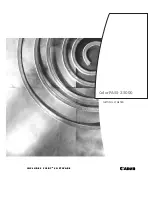
Configuring Your System 3-17
RAID Configurations
Number of
Hard Drives
RAID Level
Configured
Hard Drives in
Array
Description
1
JBOD
1
JBOD (RAID 0) JBOD is an acronym for Just a Bunch Of
Disks. Each drive can operate independently as with a
common host bus adapter; or multiple drives may be spanned
and seen as a single very large drive. No redundancy is
provided.
2
1
2
Mirroring (RAID 1) Drives are paired and mirrored. All data is
100% duplicated on an equivalent drive (fully redundant).
3
5
3
Striping with Parity (RAID 5) Data is striped across several
physical drives. Parity protection is used for data redundancy.
4
5
3 plus 1 hot
spare drive
Striping with Parity (RAID 5) Data is striped across three
physical drives. Parity protection is used for data redundancy.
This drive is used as the “Hot Spare.”
5 or more
—
—
The first four disks are as stated above. The remaining disks
are not part of the array, but are ready to be configured.
Add-on Controller
If you are adding a RAID controller to an existing system, the AcceleRAID
™
150 or
AcceleRAID
™
250 BIOS Configuration Utility allows you to configure disk arrays and
logical drives in your system. Since the utility resides in the AcceleRAID
™
150 or
AcceleRAID
™
250 BIOS on the RAID controller, its operation is independent of the
operating system in your server. Refer to Chapter 4 in this User's Guide for information
on installing an add-in option board. Refer to Chapter 4 of the AcceleRAID
™
150 or
AcceleRAID
™
250 Installation Guide for information on running the AcceleRAID
™
150 or AcceleRAID
™
250 BIOS Configuration Utility.
DACCF Configuration Utility
The DACCF utility is included with the RAID controller. The AcceleRAID
™
150 and
the AcceleRAID
™
250 support various versions of RAID technology (referred to as
RAID levels). To use any RAID level, you must configure the RAID controller using
the DACCF Configuration Utility prior to installing your Network Operating System.
For an explanation of this utility, refer to the Disk Array Controller Configuration
Utilities Manual that was shipped with the controller. Chapter 2 (Preparing the Array)
covers array hardware preparation, configuration, and initialization. After completing
the steps in Chapter 2, you can install your Network Operating System.
Configuring System Board Jumpers
Before You Begin
Only a qualified technical person should perform the procedures in this section.
Note: Electrostatic discharge (ESD) can damage the system
board. Modify the system board only at an ESD workstation.
Otherwise, wear an antistatic wrist strap attached to chassis ground.
Summary of Contents for MC2200
Page 1: ... U s e r s G u i d e Server MC2200 ...
Page 2: ...xxx ...
Page 3: ... U s e r s G u i d e Server MC2200 ...
Page 13: ...Using This Guide xi ...
Page 14: ......
Page 26: ...Packard Bell NEC ...
Page 34: ...2 8 Setting Up the System Figure 2 4 Opening the Front Door ...
Page 66: ...Packard Bell NEC ...
Page 96: ...Packard Bell NEC ...
Page 116: ......
Page 117: ...A System Cabling System Cabling Static Precautions Standard Configuration RAID Configuration ...
Page 124: ...Packard Bell NEC ...
Page 125: ...B System Status Hardware Support Information ...
Page 136: ...10 Glossary ...
Page 141: ...xx ...
Page 142: ... 904455 01 ...
















































